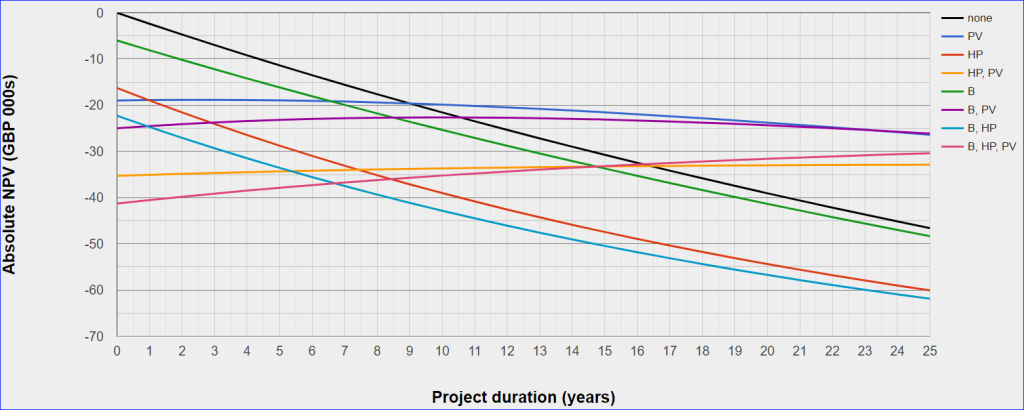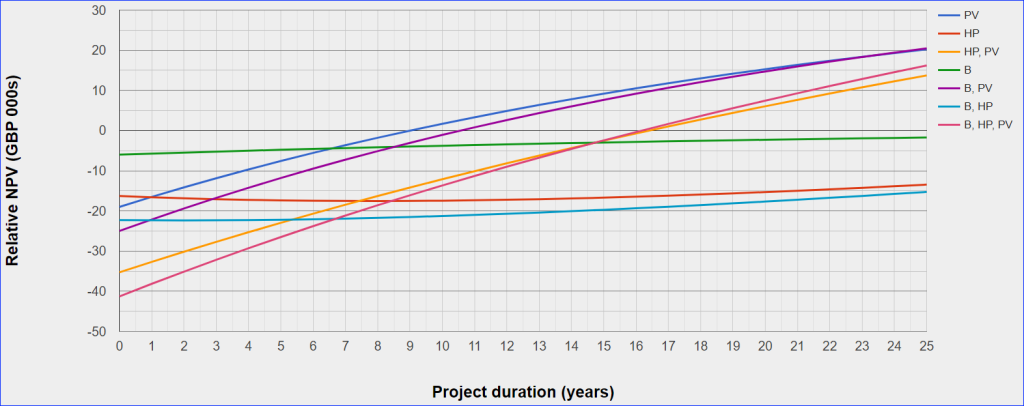If you are including solar panels, give your location to allow estimation of solar intensity. Follow the format in the example below:
"location": {
"coordinates": {
"latitude_degrees": 51.5,
"longitude_degrees": -1.24
},
"cloud_cover_months": {
"#": "Cloud cover insolution factors by year fraction",
"fractions": [0.0425, 0.123, 0.204, 0.288, 0.371, 0.455, 0.538, 0.623, 0.707, 0.79, 0.874, 0.958],
"factors": [0.544, 0.554, 0.534, 0.58, 0.608, 0.585, 0.607, 0.608, 0.57, 0.533, 0.561, 0.57]
},
"time_correction_fraction": 0,
"internal": {
"temperature_target_celsius": 21.0,
"temperature_half_life_days": 1.5,
"target_hours": [8,9,10,11,12,13,14,15,16,17,18,19,20,21],
"intolerance_gbp_per_deg_c_per_hour": 0.1,
"thermal_compliance_factor": 2.0,
}
},Because of cloud cover only a proportion, the “insolation factor”, of usable solar radiation reaches your panels. Insolation varies according to your location. Get insolation factors here using these steps:
- select your location on the map;
- select MONTHLY DATA;
- tick the “Global irradiation at angle” box and enter your panels’ average elevation angle in degrees;
- tick “Diffuse global ratio”;
- select “json” download icon;
- look up the “Kd” value for each month.
For each factor, give its time fractions into the year. In the example below the fractions are the midpoints of each month, i.e. January’s midpoint is 0.0425 = (31/2)/365, February’s is 0.123 = (31+14)/365 etc.
Add a cloud cover coefficient to the “factors” array for each respective year fraction in “fractions”. For example, if January’s cloud cover is 54.4% and February’s is 55.4%, add “0.544, 0.554,” and so on.
Otherwise, just use the “factors” values from the above example.
Finally, a number of optional thermal parameters, especially useful for heat pumps, allow the simulator to run more accurately and recommend optimum heating set back temperatures:
- “temperature_target_celsius”: target room temperature;
- “target_hours” array: hours of the day (0 to 23) during which room temperature needs to be maintained at the target temperature;
- “temperature_half_life_days”: time in days from switching heating off for room temperature to fall to midway between initial room temperature and outside temperature;
- “intolerance_gbp_per_deg_c_per_hour”: degree of intolerance to room temperature deviation from target temperature during target hours, measured in cost per degree celsius per hour;
- “thermal_compliance_factor” improves calculation of optimum setback setting. On heating houses after setbacks, houses heat at a greater rate than indicated by their heat capacity, due mainly to heating of air. For calculation purposes, it increases the rate of heating after setback periods.

